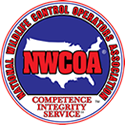THE INSPECTION I RECOMMEND FOR EVERY HOMEOWNER
What Is a Preventative Inspection? Why Do You Need One?
If you’re lucky enough to never have had a run-in with nuisance wildlife in your home, you might never have called an animal removal company. Many people don’t even want to think about the idea of having bats, raccoons, skunks, or other critters in their home.
If you don’t have critters now, though, you certainly want to keep it that way.
One of the best investments you can make for your home (and peace of mind) is a preventative inspection for wildlife problems.
Why You May Need a Preventative Inspection
A preventative inspection does just what the name suggests. It’s a check-up of your home that helps prevent future animal problems.
Don’t wait until there’s a problem to have your home checked. Simply put, there is no wrong time to have your home professionally evaluated for vulnerability to wildlife incursions-
If your neighbors have recently had problems with animals in the house, that’s a major sign that you could use an inspection. If animals in the area are finding their way into homes, there’s a good chance they’ll check out yours too. Houses that were built at the same time often have the same vulnerabilities. If your neighbors have discovered bats, raccoons, or other nuisance animals, it’s wise to have a professional check your property for signs of animal activity.
Of course, if you’ve seen direct evidence of animals in your home, like spotting waste or hearing noises, then you should call in a professional right away.
Oftentimes, though, animals aren’t easy to spot. Nuisance wildlife like small, out-of-the-way areas, like insulation, walls, roofs, porches, and more. Many homeowners don’t realize they have animals living in their home for weeks (sometimes even years). This is why a thorough, professional inspection is necessary. A wildlife expert will be able to spot tell-tale evidence of critters even if the animals themselves are hiding.
What to Expect from a Preventative Inspection
Preventative inspections are not basic walk-throughs. The only way to get an accurate idea of a house’s potential vulnerabilities is with a thorough inspection. At Cottom’s Wldlife Removal, we conduct a comprehensive 14-point inspection of the home and grounds that includes expert analysis of the building structure. Our preventative inspections normally take 30-45 minutes.
Because we’re looking for potential entry points, much of the inspection is exterior. We check the roof exterior, siding, soffits, porches, and decks for gaps, holes, or damage. I always make sure to check vents, chimneys, HVAC, and other common trouble spots.
We also inspect interior of the attic, where critters can sometimes escape notice. I always for the tell-tale signs of damage that tell me animals have been in the house.
If I do discover animals living in the house, its time to shift gears into removal and recovery. At this point, I make a recommendation to the homeowner of the best way forward, including a plan for trapping or exclusion. Usually, we’re able to provide an estimate on-site and can often begin work immediately.
If the home is critter-free, I recommend some simple steps to keep it that way. Sometimes, minor damage around the roof needs to be repaired by replacing rubber seals, shingles, or vents. Even if a home is brand-new and fully “up-to-code,” there can still be small gaps or cracks that critters can squeeze through, so I make a plan to seal any potential entrances. Simple solutions, like installing a chimney cap, can quickly eliminate vulnerabilities.
If the inspection reveals a potential structural or family health hazard, a general home inspection may be needed. It’s always better to catch problems before they get worse.
What I Look For During an Inspection
There’s a lot to watch out for during a preventative inspection. Our inspections include a 14-point checklist, which covers the full range of potential issues.
When I examine a home, here are some of the elements I’m focusing on:
- Direct evidence of birds, rodents, or small mammals
- Attic ventilation, which can become clogged with leaves or nest materials
- Sounds of animals, including raccoon chatter
- Familiar patterns of wildlife damage from habitation, waste, or movement
- Attic damage from water, weather events, mold, or environmental contaminants
- Common problem spots, like vents, pipes, soffits, chimneys, siding, and fans
Wildlife can be clever and tenacious. If your home has a vulnerability, they will find it. I’d rather find it first! Preventative inspections are a smart investment, since repairing the damage from a critter (or two, or three…) can be expensive.
Questions about this topic? Need to schedule an inspection? Get in touch with us at 440-236-8114.





